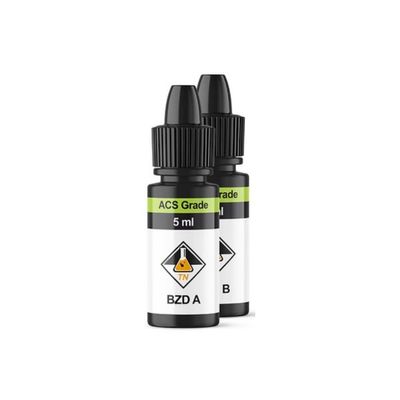


TN Scientific - Model BETA BZD - Reagent Drug Testing Kit
TN Scientific`s reagent drug testing kits provide a user-friendly solution for evaluating the relative purity of drugs and substances by detecting common adulterants. Additionally, our reagent test kits are perfect for authenticating samples, ensuring safety, and delivering accurate results.
Our BZD reagent is a reliable and easy-to-use solution for those looking to identify the presence of benzodiazepines in their samples. Although there have been some inconsistent results with alprazolam, our reagent consistently identifies other benzodiazepine molecules such as diazepam, pyrazolam, triazolam, nitrazepam, flunitrazepam, diclazepam, clonazolam, clonazepam, flualprazolam, flubromazepam, and etizolam.
We`re currently experiencing inconsistent results from customers using our beta BZD reagent with different brands of alprazolam. It appears that certain fillers may cause false negatives in some cases.
It`s important to note that if you test a legitimate benzodiazepine and it doesn`t turn purple, that doesn`t necessarily mean the substance isn`t a benzodiazepine. While our reagent can produce different shades of pinks and purples, purple generally indicates the presence of a benzodiazepine.
If you`re testing a pharmaceutical-prescribed benzodiazepine and would like to help us develop this reagent, please consider sharing your results by contacting us through our website`s contact form. As a thank-you for your contribution, we`ll refund the cost of the reagent.
The strength of the reaction remains consistent regardless of the substance amount. If multiple reactive substances are present, the resulting colors may blend, complicating interpretation. Utilizing a combination of reagents, test strips, and laboratory testing services available on our website allows for a more comprehensive analysis.
- BZD reagent bottles
- Physical color chart
- 2ml test tube
- Storage container
- Chemical absorption pad
- Step 1 - Place a small 10 mg sample (or Imagine 100 grains of salt) on a non-porous, white, or clear surface. Highly recommended to use our test trays or test tubes.
- Step 2 - Add 1-2 drops of reagent to the sample, avoiding contact with the dropper.
- Step 3 - Observe the color change within 0-180 seconds and compare to the color chart.
- No physical instructions are included with the kit. Please refer to the instructions and safety data on our website at https://www.tnscientific.com/safety-data for proper usage and handling.
